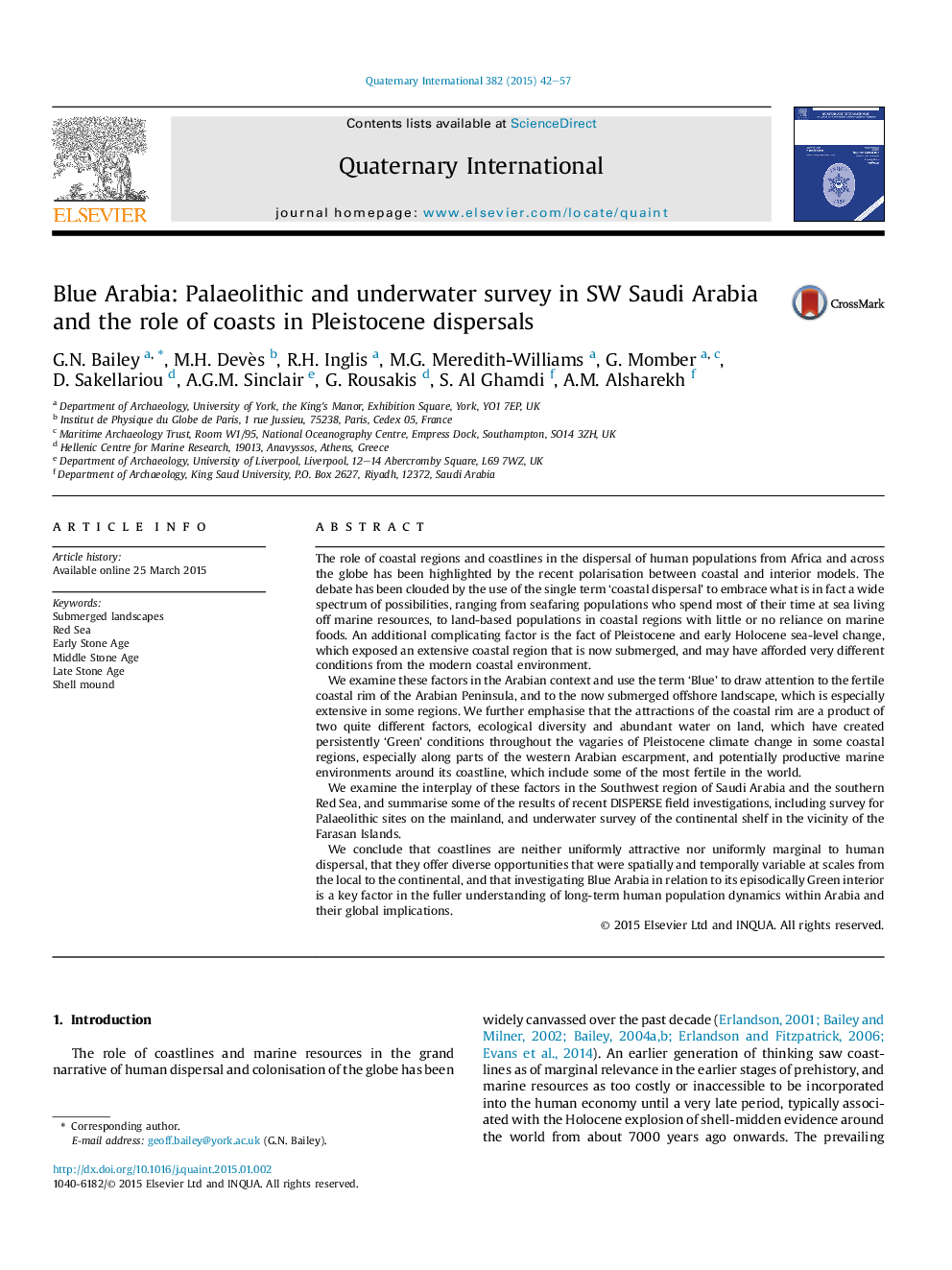| Article ID | Journal | Published Year | Pages | File Type |
|---|---|---|---|---|
| 1040623 | Quaternary International | 2015 | 16 Pages |
The role of coastal regions and coastlines in the dispersal of human populations from Africa and across the globe has been highlighted by the recent polarisation between coastal and interior models. The debate has been clouded by the use of the single term ‘coastal dispersal’ to embrace what is in fact a wide spectrum of possibilities, ranging from seafaring populations who spend most of their time at sea living off marine resources, to land-based populations in coastal regions with little or no reliance on marine foods. An additional complicating factor is the fact of Pleistocene and early Holocene sea-level change, which exposed an extensive coastal region that is now submerged, and may have afforded very different conditions from the modern coastal environment.We examine these factors in the Arabian context and use the term ‘Blue’ to draw attention to the fertile coastal rim of the Arabian Peninsula, and to the now submerged offshore landscape, which is especially extensive in some regions. We further emphasise that the attractions of the coastal rim are a product of two quite different factors, ecological diversity and abundant water on land, which have created persistently ‘Green’ conditions throughout the vagaries of Pleistocene climate change in some coastal regions, especially along parts of the western Arabian escarpment, and potentially productive marine environments around its coastline, which include some of the most fertile in the world.We examine the interplay of these factors in the Southwest region of Saudi Arabia and the southern Red Sea, and summarise some of the results of recent DISPERSE field investigations, including survey for Palaeolithic sites on the mainland, and underwater survey of the continental shelf in the vicinity of the Farasan Islands.We conclude that coastlines are neither uniformly attractive nor uniformly marginal to human dispersal, that they offer diverse opportunities that were spatially and temporally variable at scales from the local to the continental, and that investigating Blue Arabia in relation to its episodically Green interior is a key factor in the fuller understanding of long-term human population dynamics within Arabia and their global implications.
